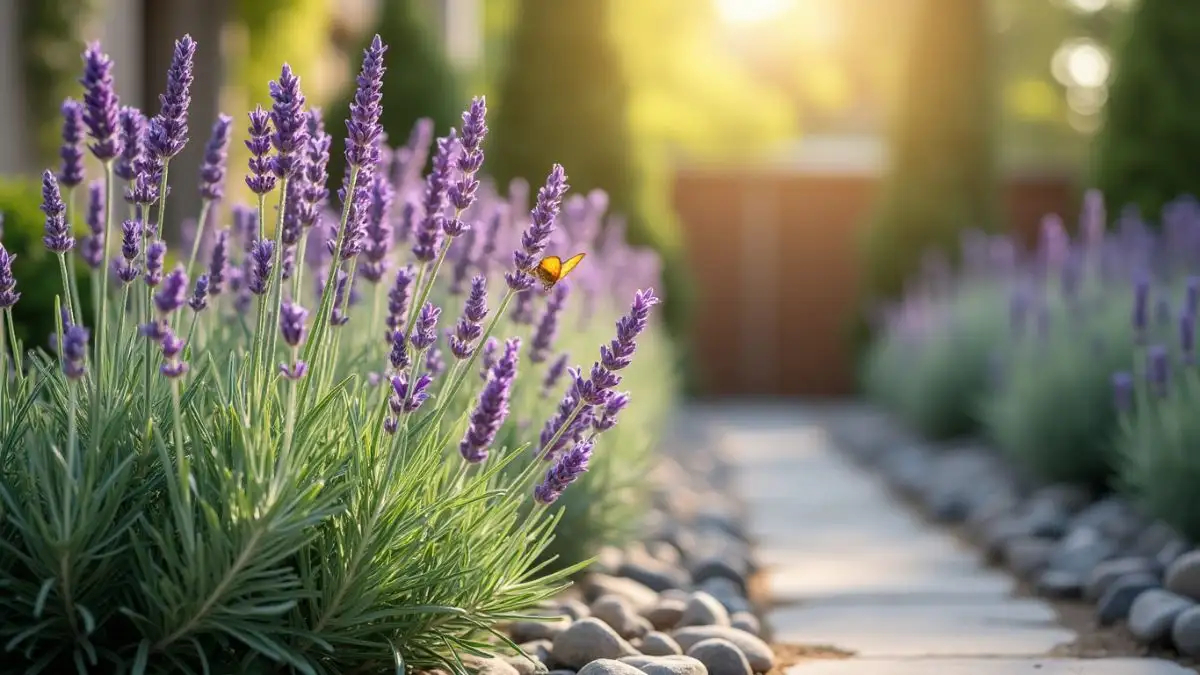English Lavender Plants: 7 Amazing Benefits You Must Know
Have you ever paused to savor the calming aroma of English lavender plants? This vibrant and fragrant shrub isn’t just a treat for the senses; it’s a powerhouse of benefits waiting to enhance your home and garden. Whether you’re looking for natural remedies, eco-friendly gardening options, or simply a touch of beauty in your surroundings, English lavender is the answer you’ve been seeking.
Let’s explore how this versatile plant, scientifically known as Lavandula vera angustifolia, can transform your space and lifestyle.
Table of Contents
What Are English Lavender Plants?
English lavender plants, or Lavandula vera angustifolia, are hardy perennials prized for their aromatic flowers and soothing properties. Native to the Mediterranean, this variety stands out for its compact growth habit, making it ideal for small gardens and container planting. The plant’s silver-green foliage contrasts beautifully with its signature purple blooms, creating a striking visual appeal.
Growth Habit of Lavender
- Size: Typically grows up to 2 feet tall and wide.
- Shape: Compact, bushy, and well-rounded.
- Flowering: Blooms from late spring to early summer, with some varieties flowering again in the fall.
When planted in full sun with well-draining soil, English lavender thrives, requiring minimal care while offering maximum rewards.
1. Stress Relief and Better Sleep

One of the most well-known benefits of English lavender plants is their ability to reduce stress and promote better sleep. The soothing scent of lavender has been shown to calm the nervous system, helping you unwind after a hectic day.
How to Use Lavender for Relaxation
- Lavender Tea: Brew dried lavender buds in hot water for a calming herbal tea.
- Sleep Sachets: Place a sachet filled with dried lavender under your pillow to aid restful sleep.
- Essential Oil: Diffuse lavender oil in your bedroom to create a tranquil environment.
Numerous studies confirm that lavender essential oil can improve sleep quality and reduce anxiety levels. Incorporating this plant into your life is an easy way to support mental well-being.
Scientific Backing
Research published in the Journal of Advanced Nursing highlights that lavender aromatherapy can significantly improve sleep quality, particularly for individuals suffering from insomnia. This makes English lavender a must-have for anyone looking to enhance their nighttime routine.
Real-Life Example
Imagine a busy professional struggling with insomnia. By introducing lavender essential oil into their bedtime routine, they notice a marked improvement in their sleep within weeks, transforming their mornings.
Additional Tip:
Create a lavender sleep spray by mixing a few drops of lavender essential oil with water in a spray bottle. Mist your sheets and pillows before bed for an even more immersive experience.
2. Enhances Skin Health
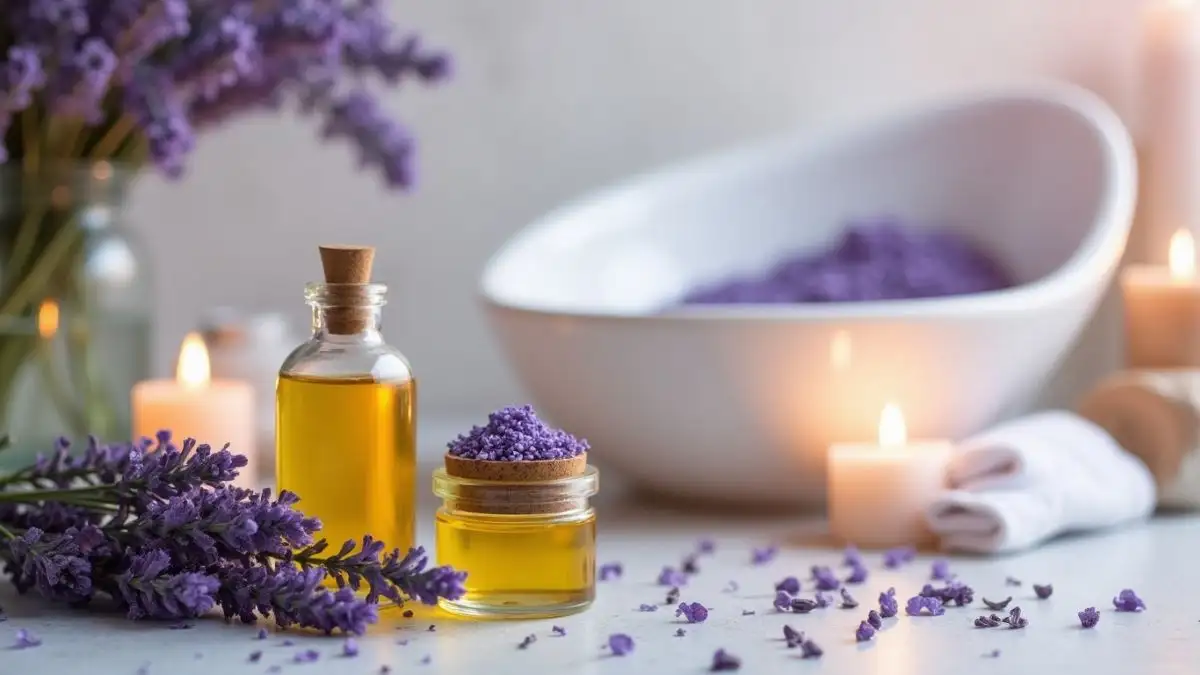
Your skin deserves the gentle care that English lavender provides. This plant’s anti-inflammatory and antimicrobial properties make it a natural remedy for various skin conditions.
DIY Lavender-Infused Skincare
- Lavender Oil for Acne: Mix a few drops of lavender oil with a carrier oil, such as jojoba, and apply it to acne-prone areas.
- Soothing Bath: Add dried lavender and Epsom salts to your bath for a relaxing and skin-nourishing soak.
- Lavender Balm: Combine lavender essential oil with shea butter to create a hydrating balm for dry skin.
By using lavender-based treatments, you’re not just enhancing your skin’s appearance but also reducing irritation and redness naturally.
Lavender for Scalp Health
Lavender oil can also promote a healthier scalp. Massage it into your scalp to reduce dandruff and support hair growth. Its antifungal properties combat issues like scalp itchiness and flakiness.
Lavender in Modern Skincare Products
Many high-end skincare brands are now incorporating lavender extracts into their products due to its ability to soothe and rejuvenate the skin. Adding English lavender plants to your garden means you can create your own natural skincare solutions at home.
3. Natural Pest Repellent
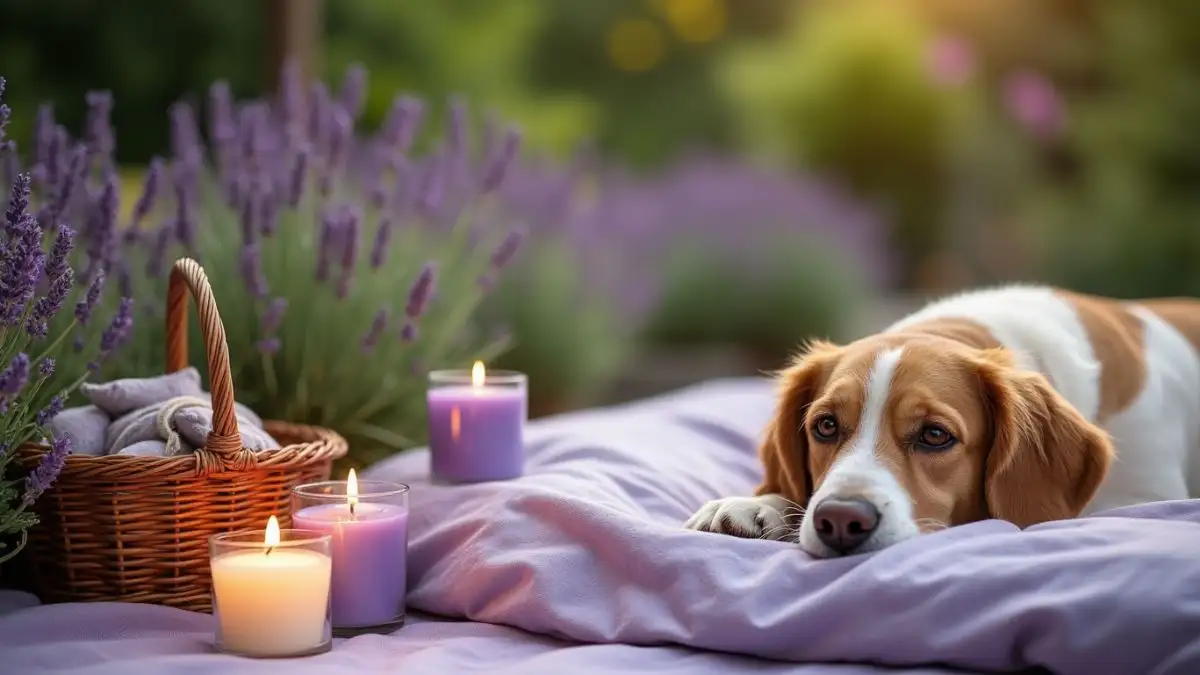
Fed up with mosquitoes and moths invading your home? English lavender plants act as a natural pest repellent, keeping unwanted insects at bay. Their potent fragrance confuses and repels pests, offering an eco-friendly alternative to chemical repellents.
Lavender Pest Control Tips
- Lavender Candles: Light lavender-scented candles during outdoor gatherings to ward off mosquitoes.
- Garden Borders: Plant English lavender around vegetable gardens to deter pests.
- Dried Lavender Sachets: Place sachets in closets or drawers to keep moths away from clothes.
This natural solution helps protect your home and garden without harming beneficial insects like bees and butterflies.
Bonus: Protecting Pets
Lavender can also be used to protect pets from fleas and ticks. Create a lavender spray by mixing essential oil with water and lightly mist your pet’s bedding.
Additional Insights:
Planting lavender near entryways and windows not only keeps pests out but also creates a fragrant barrier that enhances the aesthetics of your home.
4. Culinary Delights

Did you know English lavender can elevate your culinary creations? Its subtle floral flavor pairs wonderfully with both sweet and savory dishes, adding a unique twist to your meals.
Recipe Idea: Lavender Lemon Cookies
Ingredients:
- 1 cup butter
- 1 cup sugar
- 2 cups all-purpose flour
- 2 tsp dried lavender buds
Instructions:
- Cream butter and sugar together.
- Mix in dried lavender and flour.
- Shape the dough into small balls and gently press them flat.
- Bake at 350°F for 12 minutes.
These cookies make a delightful treat, perfect for tea time or special occasions.
Lavender-Infused Honey
Another easy recipe involves infusing honey with dried lavender buds. Use this lavender honey to sweeten teas, drizzle over pancakes, or pair with cheeses.
Lavender Beverages
Try adding a hint of lavender syrup to lemonade or cocktails for a refreshing floral twist that impresses guests.
Cooking Tip:
Always use culinary-grade lavender to avoid bitterness and ensure the best flavor in your dishes.
5. Supports Pollinators

English lavender plants play a crucial role in supporting pollinators like bees and butterflies. By planting English lavender in your garden, you’re contributing to the health of these vital species.
Companion Planting with Lavender
- Pair lavender with rosemary, thyme, and sage for a Mediterranean-style garden.
- Create a pollinator haven by planting lavender alongside echinacea and black-eyed susans.
Lavender’s long blooming season ensures a consistent nectar source, benefiting your garden’s ecosystem.
Did You Know?
Studies show that lavender’s nectar has antimicrobial properties, making it beneficial not only for pollinators but also for honey production.
Real-Life Impact:
A gardener in a suburban neighborhood reported an increase in local bee populations after planting lavender in her yard, which led to higher yields in her vegetable garden.
6. Beautiful Home Décor
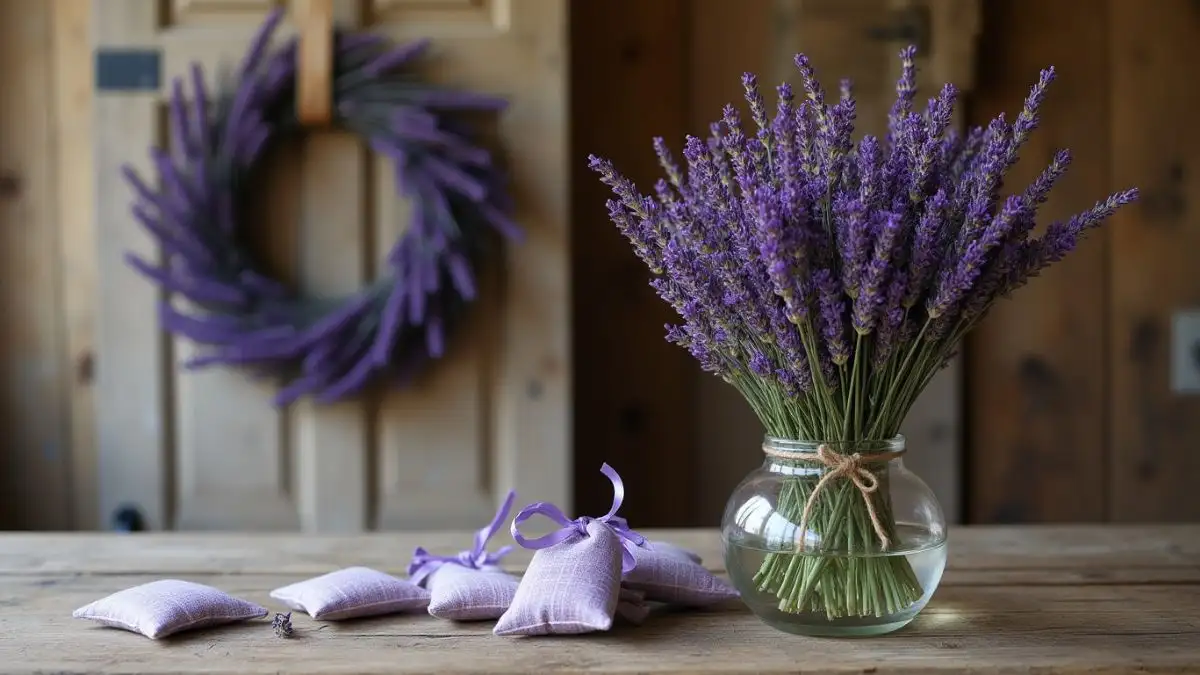
Dried English lavender is a versatile material for home décor. From fragrant wreaths to elegant centerpieces, lavender adds a touch of rustic charm to any space.
DIY Lavender Wreath
Materials:
- Dried lavender stems
- Floral wire
- Wreath frame
Steps:
- Gather small bundles of dried lavender.
- Attach each bundle to the wreath frame using floral wire.
- Continue layering until the frame is covered.
Hang your lavender wreath on your front door for a warm and inviting touch.
Lavender Sachets
Use dried lavender to fill fabric sachets. These make thoughtful gifts and can be tucked into drawers or placed under pillows for a constant lavender aroma.
Additional Décor Ideas:
Create lavender centerpieces by placing dried stems in mason jars or vases. These arrangements are perfect for weddings or dinner parties.
7. Medicinal Uses and Pain Relief
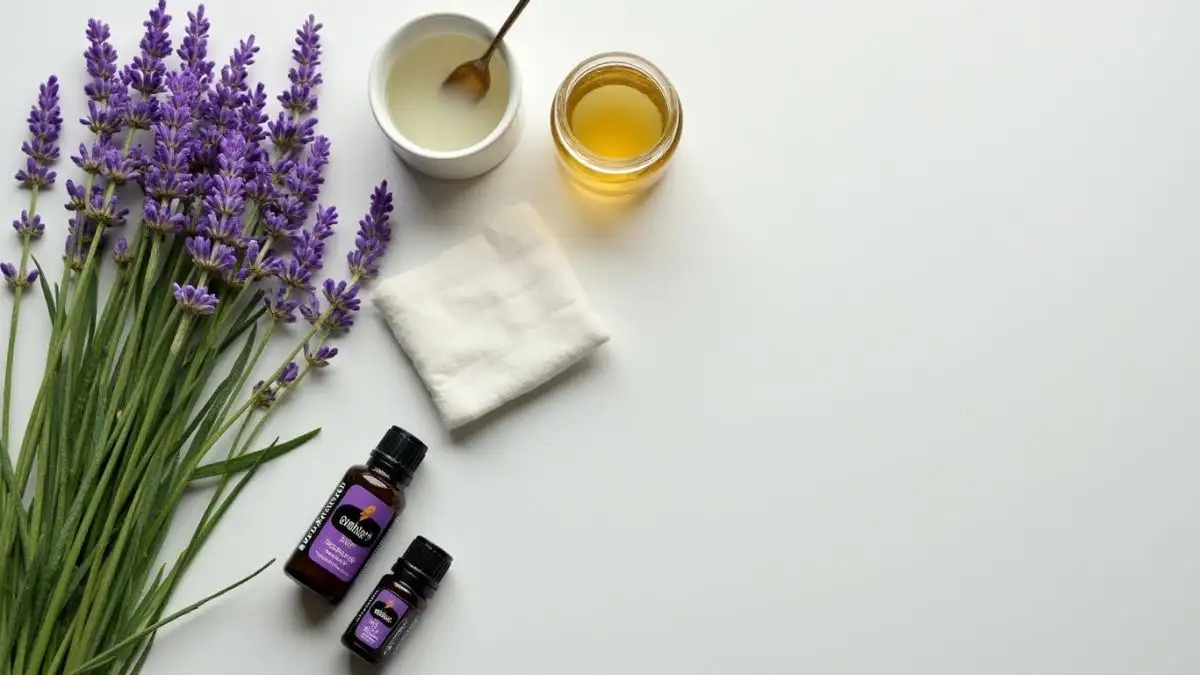
English lavender has been used for centuries as a natural remedy for pain relief and minor ailments. Its soothing properties make it effective for headaches, muscle soreness, and even minor burns.
How to Use Lavender for Pain Relief
- Lavender Compress: Soak a cloth in lavender-infused water and apply it to sore muscles or joints.
- Headache Relief: Gently massage lavender oil onto your temples to ease tension headaches.
These simple remedies showcase lavender’s powerful healing potential.
Treating Minor Burns
For minor burns, dilute lavender oil with aloe vera gel and apply it to the affected area. Its antimicrobial properties promote faster healing.
Additional Insights:
Modern studies are exploring lavender’s potential in reducing post-surgical pain, adding to its reputation as a versatile medicinal plant.
How to Grow and Care for English Lavender
Growing English lavender is easier than you might think. With the right conditions, you can enjoy a thriving plant that enhances your garden’s beauty and utility.
Planting English Lavender
- Soil Requirements: Well-draining, sandy soil with a neutral to slightly alkaline pH.
- Sunlight Requirements: At least 6-8 hours of full sun daily.
- Watering: Use sparingly, as excessive watering can cause root rot.
Maintenance Tips
- Prune after flowering to encourage new growth.
- Apply a layer of mulch to safeguard roots throughout the winter season.
- Avoid fertilizing too often, as lavender thrives in nutrient-poor soil.
Understanding what the water requirements of a lavender plant are ensures its longevity and vibrant blooms.
Pests and Diseases
Although lavender is hardy, it can occasionally suffer from fungal diseases. Ensure proper spacing and avoid overwatering to keep your plants healthy.
Container Gardening with Lavender
English lavender thrives in pots. Use a well-draining potting mix and ensure your container has drainage holes to prevent waterlogging.
Conclusion
English lavender plants are more than just a fragrant addition to your garden; they’re a multipurpose powerhouse offering stress relief, culinary delights, pest control, and more. By planting English lavender and incorporating it into your daily life, you’ll reap benefits that touch every aspect of your home and well-being.
So why wait? Add this incredible plant to your garden today and start enjoying its amazing benefits!
FAQ Section
1. What is the growth habit for lavender?
English lavender has a compact, bushy growth habit, typically reaching 2 feet in height and width.
2. How much sun does English lavender need?
English lavender thrives in full sun, requiring at least 6-8 hours of sunlight daily.
3. Can I grow lavender in pots?
Yes, English lavender grows well in pots, provided they have proper drainage and ample sunlight.
4. What’s the best way to dry lavender?
Tie the stems into bundles and hang them upside down in a cool, dark, and well-ventilated space.
5. Is English lavender edible?
Yes, it’s perfect for culinary uses like teas, cookies, and savory dishes.
6. How often should I water lavender?
Water lightly, letting the soil dry out completely between each watering.
7. When should I prune my lavender plant?
Prune after the first bloom to encourage new growth and maintain shape.
8. Does lavender attract bees?
Yes, English lavender is highly attractive to bees and other pollinators.
9. How do I propagate English lavender?
Take semi-hardwood cuttings in late spring, plant in well-draining soil, and keep moist until roots develop.
10. Can lavender survive winter?
English lavender is hardy and can survive winter with proper mulching and protection.
11. What are the benefits of lavender in aromatherapy?
Lavender promotes relaxation, reduces anxiety, and enhances sleep quality when used in aromatherapy.
12. Can lavender oil be ingested?
Only food-grade lavender oil is safe for consumption. Always check the label before use.


